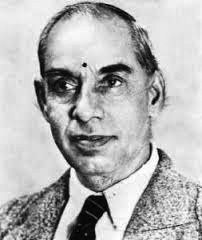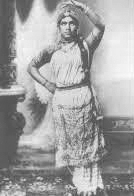
E. Krishna Iyer.
Some persons fight for the right causes, win battles, ensure that their achievements yield benefits to society, shine in well-deserved limelight, but then disappear into the shadows of time, leaving succeeding generations hardly aware of their place in history. E. Krishna Iyer was such a fighter, victor and luminary who is now a half-forgotten man. He played a decisive role in the renaissance of Tamil Nadu’s classical dance and its transformation from Sadir (aka Dasiattam) to Bharata Natyam.
Krishna Iyer was born on August 9, 1897 in a village in Tirunelveli District. The eighth of 14 children, he was given in adoption to a land-owning middle-class family in Kallidaikurichi, a village in the same district.
The terrain, tradition and the time in which a person is brought up foster latent talent and aptitudes. Kallidaikurichi where E. Krishna Iyear (E.K.) was brought up was once called the ‘Brahmin Chettinadu’ by a wisecracking Alladi Krishnaswamy Iyer, presumably because it was noted as much for its considerable number of rich families with large tracts of land or engaged in hundi business and handloom cloth trade as for its orthodox and traditonal culture. Every summer, its rich families conducted a number of marriage functions. In those times, marriages used to be celebrated over four days. And no wedding of a wealthy family was complete without high class music and a dance performance. E.K. grew up in such an atmosphere and from a young age acquired a taste for music and dance.
Krishna Iyer joined Madras Christian College in 1914. Then he studied in the Trivandrum and Madras Law Colleges. While he was at the Law College hostel in Trivandrum, an amateur dramatic institution requested him to play one of the leading female roles in their to-be-staged play, his looks and considerable musical talent displayed in college having been noticed. The play was Sambanda Mudaliar’s Sarangadhara and the role was that of Ratnangi. Some days after the play was staged, he was pleasantly surprised to read good comments about his histrionic talent in the local press.
Spurred by the achievement, E.K. decided to undertake systematic musical training. He studied with a couple of violin vidwans in Trivandrum and Chennai. He also started to attend all music concerts of note and absorb the finer points.

E. Krishna Iyer as Malavika.
E.K. took his law degree in 1921 and apprenticed with M. Patanjali Sastri, who later became a judge of the Madras High Court and Chief Justice of the Supreme Court. After being called to the Bar in 1922, E.K. developed a good practice both on the original side and the appellate side of the Madras High Court.
The next year he was invited to join the Suguna Vilas Sabha, the premier theatrical group of the time, which was led by P. Sambanda Mudaliar, the architect of modern Tamil theatre. According to Mudaliar, E.K., besides being an actor of ability, was also a male-dancer whose performances were noteworthy.
E.K. was inspired to become a dancer by the example of one Rangavadivelu of the Suguna Vilas Sabha who was the first male dancer to don and perform in female costumes. E.K. got his chance to take on this new role when he was chosen to act the part of Malavika in Kalidasa’s Malavikagnimitra. The part required him to act, sing as well as dance. In preparation for the dance sequences, he learnt Sadir from a celebrated dancer, Madurantakam Jagadambal.
Learning about the dancing talents of E.K., the great natyacharya, A.P. Natesa Iyer, who was well-known for his teaching of solo Sadir, besides Bhagavata Mela and Harikatha Kalakshepam, offered to train the young man systematically in Sadir. E.K. was only too happy to acquire such a master who was known popularly as ‘Abhinayam’ Natesa Iyer. When the training was over, Natesa Iyer had one request, namely that E.K. should spread the art and restore its dignity.
E.K. had a well-proportioned and supple body. This aided him to obtain distinction as a dancer and he made his mark quickly. But all his performances were benefit shows in aid of charitable causes or institutions. At one place the audience would not leave the hall when the show was over till E.K. removed his wig as they had been betting among themselves on whether the dancer was a man or a woman. E.K. who was in the prime of his youth danced exactly like a traditional female dancer and there was good reason for the betting to take place.
Even from the first years of the Music Academy, E.K. was eager to introduce dance in its programmes. T.L. Venkatarama Iyer, who later became a judge of the Supreme Court, has recalled how he and most of the other members of the Academy opposed E.K.’s attempts.
But, although very eager, E.K. was not impatient and he bided his time, awaiting a suitable opportunity. When he was incarcerated for political activity, the Academy in its Journal reported the event and said: “By his enforced absence, the Academy has been very greatly handicapped in its activities and the histrionic world, wherein Mr. Krishna Iyer had made a name, has had a sudden gloom cast over it. It is however some consolation to us to learn that the Government of Madras has thought fit to recommend him to be placed in the ‘A’ class (of prisoners) and that he will be back amidst us in November.”
E.K. did not idle his time away while in prison. He met many a leader there and tried to convince them of the need to revive the art of dance. Most of them agreed with him.
In 1932, after E.K. fought a crucial battle in the Press with Dr. Muthulakshmi Reddy, the staunch Anti-Nautch leader, he moved and succeeded in getting approval for his resolution at the sixth annual conference of the Music Academy for renaming the dance known till then as Sadir, Dasiattam, etc. as Bharata Natyam. This small step of the Academy would later turn out to have been a great leap for the most outstanding classical dance of India.
In the early 1930s, E.K. started yet another facet of his career and became a music and dance critic as well. His reviews were published in various periodicals. Khasa Subba Rao, a founder-editor of Swatantra which later became Swarajya, has pointed out that when E.K took up this new line, there were no readymade technical terms in English for use in dealing with Indian arts. E.K. had to improvise a new vocabulary to do justice to his assignments. The public and artistes alike thought that E.K. was an impartial critic.
As one of the Secretaries of the Academy, E.K. invited Rukmini Devi to attend a dance recital of Meenakshisundaram Pillai’s disciples on New Year’s Day, 1935. He was no stranger to the ‘Adyar amma’. She remembered his coming to the school founded by her husband Arundale and Dr. Annie Besant and teaching Bharatiar’s songs to the students. After seeing the dance, Rukmini Devi decided to learn the art herself. According to her, she consulted E.K. and he showed great interest in her desire to learn the art. Pandanallur Muthiah Pillai, son of Meenakshisundaram, had recorded that his father was reluctant to accept Rukmini Devi as a disciple but E.K. prevailed upon him to do so. E.K. was the happiest man when the great guru agreed, inasmuch as a new convert to his faith could learn from the best tutor there was. E.K. considered Rukmini Devi’s success important since she could win friends and influence other people with her passionate advocacy and example. Since she was already a well-known personality and was connected with the prestigious institution of the Theosophical Society, she could, he reasoned, bring the desired respectability to the dance.
In 1936, E.K. did another great service to Bharata Natyam. He was, at that time, also the correspondent of the Teachers’ College of Music started by the Music Academy. He arranged for Kattumannargudi Muthukumara Pillai, a first-rate master of the authentic dance tradition, to teach there.
E.K’s passionate interest in preserving and promoting dance was not, however, an exclusive preoccupation. He was a keen student of trends in classical music and devoted his attention also to introducing reforms when he felt they were necessary. For example, he felt that the listening public was getting turned away by elaborate exhibitions of punditry. He argued for the eschewal of pedantry and the reduction of the time given to the all-too-elaborate ragam-tanam-pallavi in kutcheris. In fact, he argued the case for limiting the typical kutcheri to three hours. His proposals triggered a fierce debate in the coloumns of The Hindu in 1929.
E.K. was involved next in the controversy over Tamil Isai. On the seventh day of the 1931 conference of the Music Academy there was a discussion on the language of music lyrics. T.V. Subba Rao, an Academy stalwart, moved a resolution with the following text:
“This conference of the Experts of the Music Academy, Madras, is emphatically of opinion that it should be the aim of all the musicians and lovers of music to preserve and maintain the highest standard of classical Carnatic music and so no consideration of the language should be imported so as to lower or impair that standard.”
E.K. was for a resolution that would reconcile the opposing points of view expressed in the debate. He was for encouraging compositions in neglected languages without prejudice to classical standards. His suggestion was not accepted and the official resolution was approved by the house with only one member dissenting.
E.K. belonged to the socialist section of the Indian National Congress and his concern was always for the cultural welfare of the common people. That was the reason why, in his later endeavours, he concentrated on reforming Bhagavata Mela and rescuing the folk heritage. But even then he did not forsake Bharata Natyam.
In the eventful life E.K. received many honours, awards, titles and tributes. The best compliment received was from Dr. Muthulakshmi Reddy, his one-time opponent. Sending a message for his 61st birthday celebration, she said that E.K. had been devoted to a worthy cause and had done a great service to the South Indian art of Bharata Natyam by regenerating and restoring it to its original purity and dignity. She noted that it had become a popular art not only in every household but also in all educational institutions.
Ironically, however, E.K’s influence in the Academy waned with the passage of years as others gained ascendancy in its affairs. The way latter-day chronicles sketched his contributions to the organisation, it seemed they were already half-forgotten. So much so, for the same birthday celebrations mentioned previously, neither the Academy nor any of its executives was in any way associated with the function beyond sending a very formal message.
As Vazhuvoor Ramiah Pillai, a good friend of E.K., would say: “The world is like that.”
|

